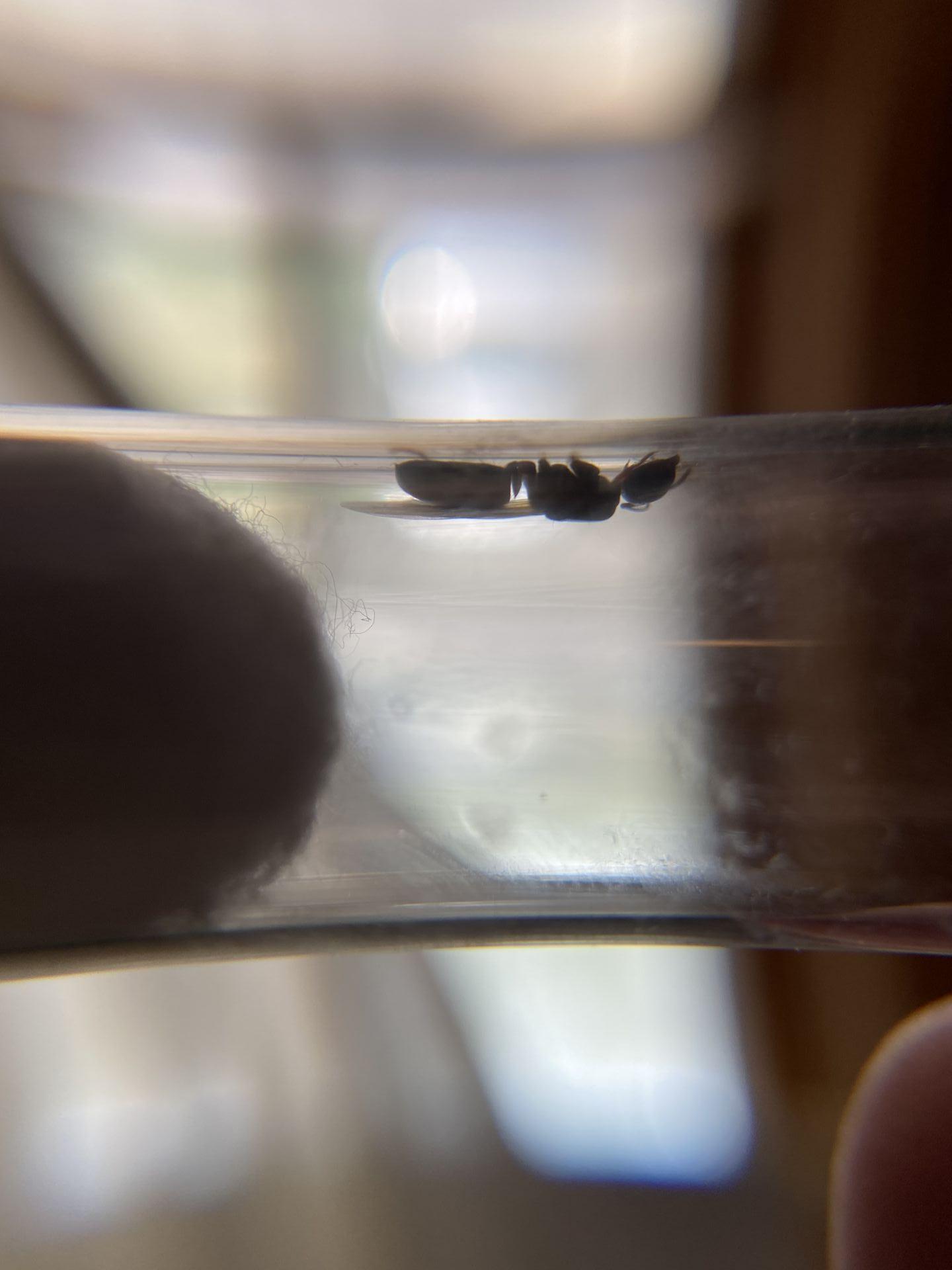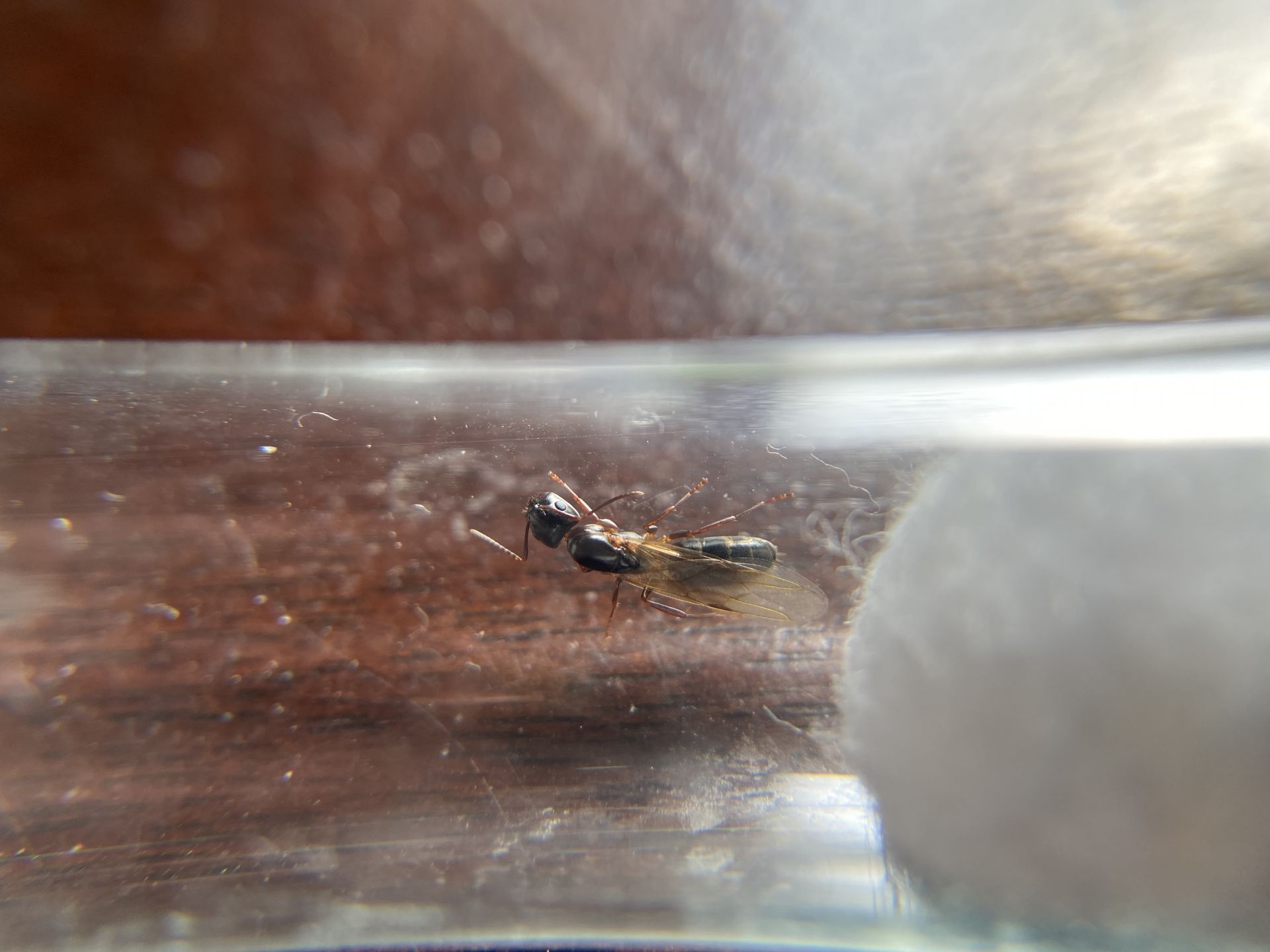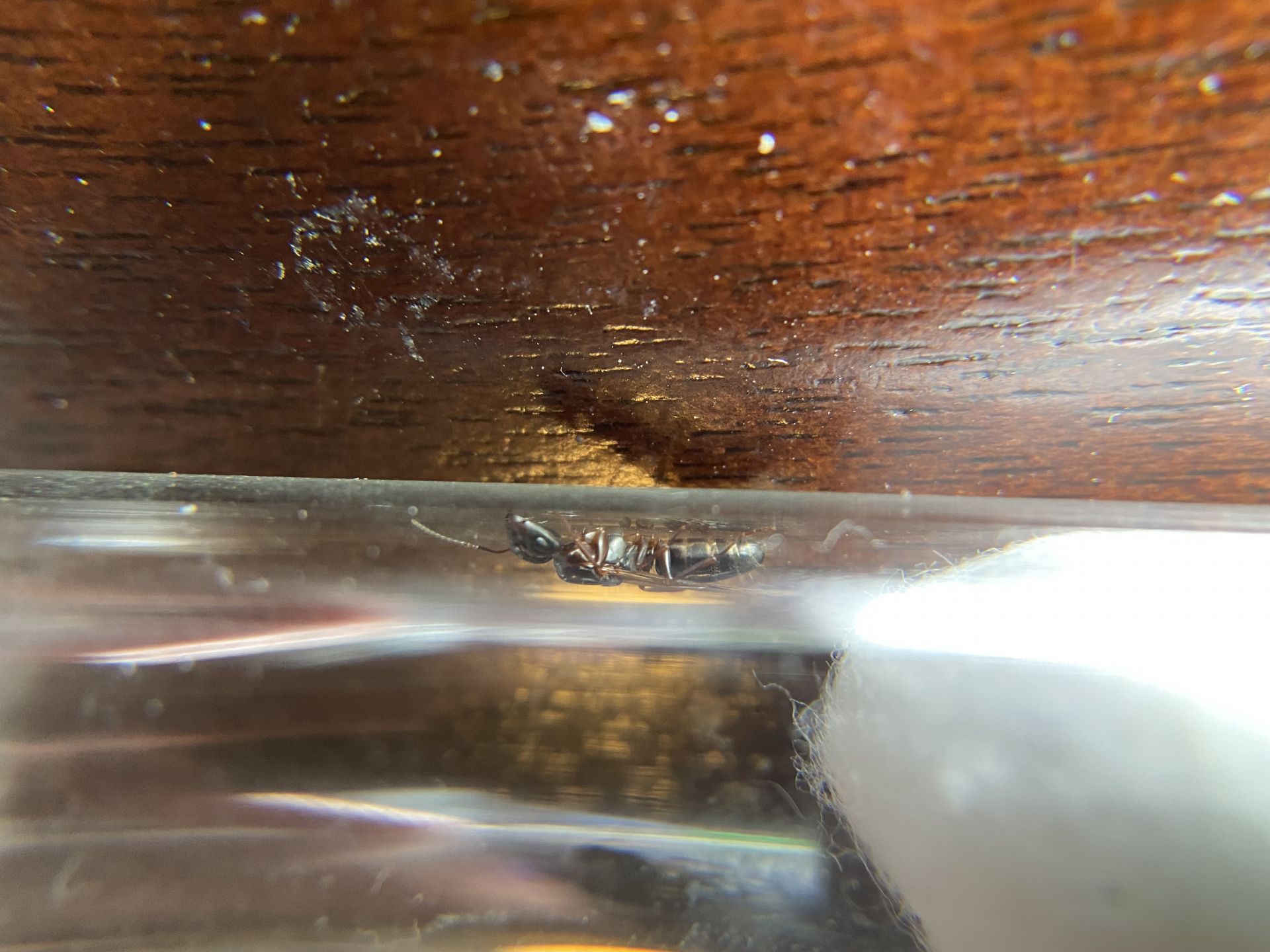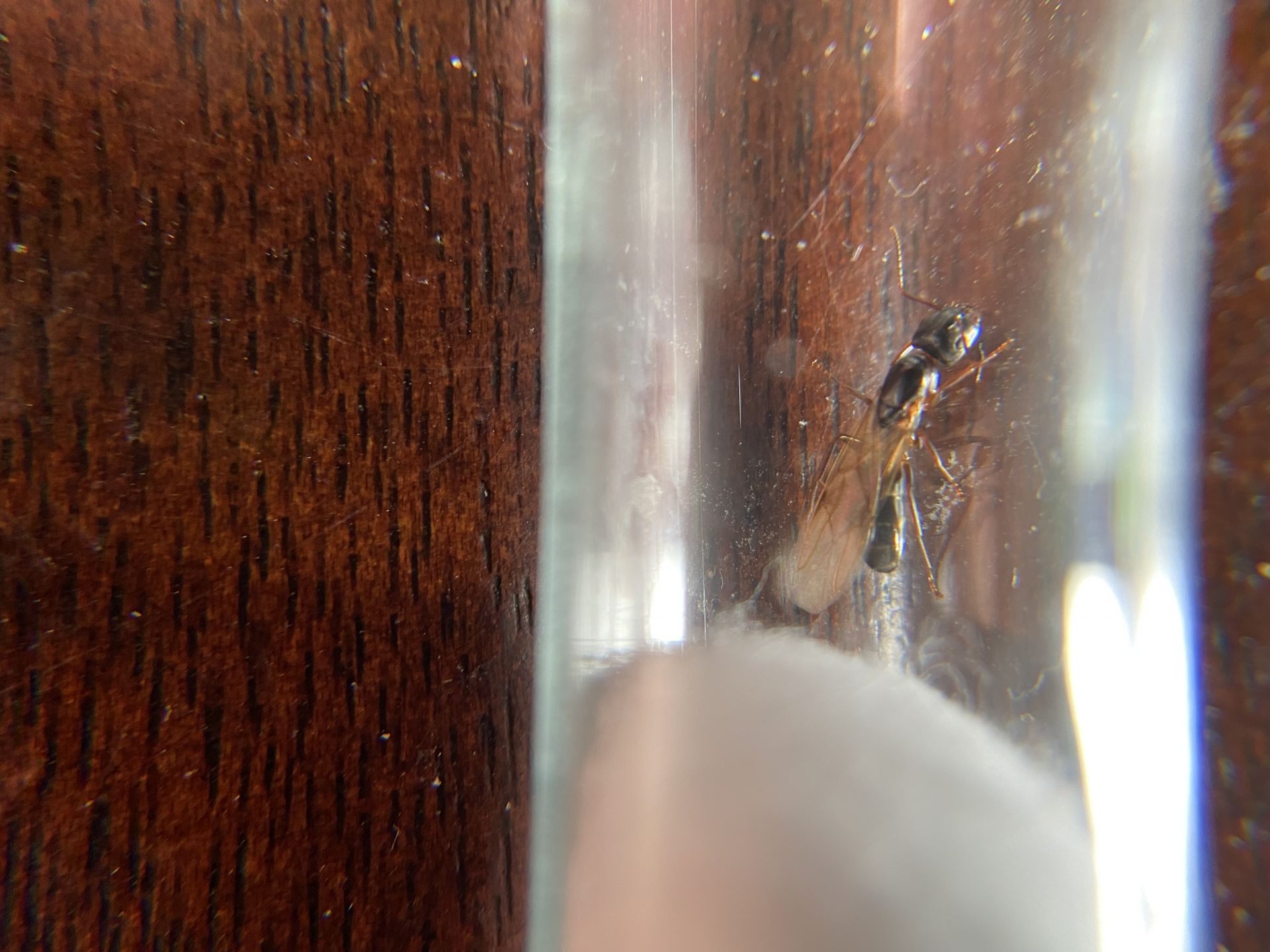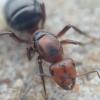1. Location (on a map) of collection: Northern Illinois
2. Date of collection: 5/13/2022
3. Habitat of collection: Suburban backyard
4. Length (from head to gaster): 8-9 mm
5. Color, hue, pattern and texture: Black, deep red legs
6. Distinguishing characteristics:
7. Distinguishing behavior:
8. Nest description:
9. Nuptial flight time and date: 9:30pm found at blacklight on 5/13/2022
